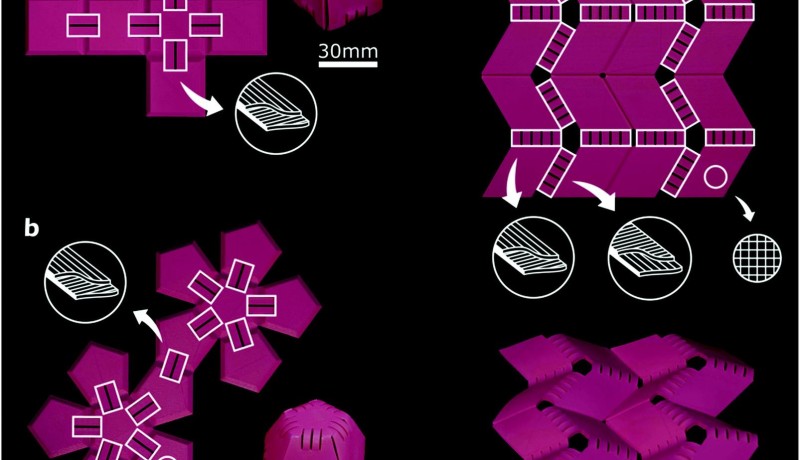Self-folding structures using 3D-printer

Researchers from the TU Delft have, with the aid of origami and 3D-printing, made planar structures that can fold themselves into three-dimensional constructions (in the video below this is demonstrated with the aid of a tulip). The constructions build themselves in a predetermined order – some parts pull together sooner than others. Until recently this required special (costly) printers and even special materials; however, the researchers under the leadership of professor Amir Zadpoor have developed a new technique in which an normal 3D-printer in combination with low-cost printer materials suffices.
Origami
Professor Zadpoor, in the meantime, has developed into a kind of origami master. His team combines the traditional Japanese are of paper folding with modern 3D-printing technology to build structures that can roll up, turn, pleat and fold themselves into all kinds of 3D objects.
This shape-shifting, as this technique is also called, usually requires quite a bit of manual work. However, the team from the TU Delft use a popular Ultimaker printer with PLA printer material. In addition, the entire process is automated.
Programming delays
During the folding of complex structures, some parts have to be folded before others. That is why delays have to be programmed into the material (sequential shape-shifting). This is done by stretching the material in certain places while printing. The 'memory' programmed his way is activated by heating.
Implants
This combination of origami and 3D-printing is a very important step towards the development of better bone implants. In theory, this technique offers the possibility of making prostheses that are porous on the inside, so that stemcells from the patient can attach there. In this way the implant will be stronger and more durable. More information can be found here.
